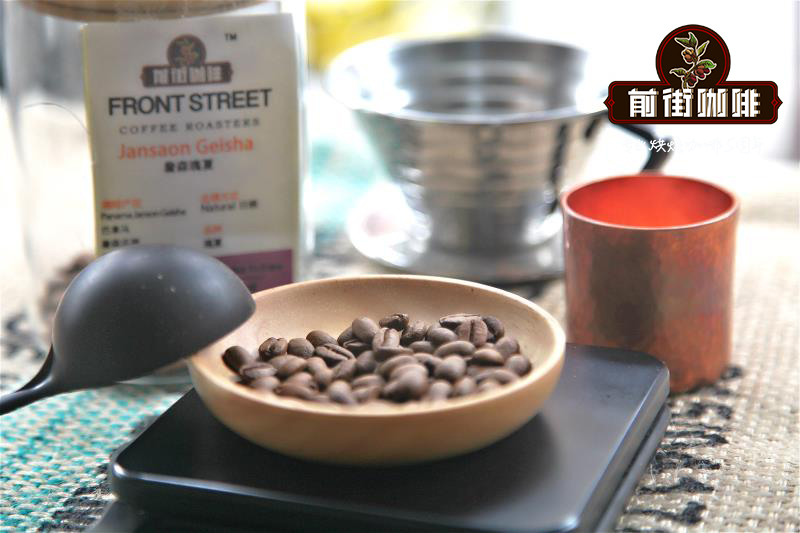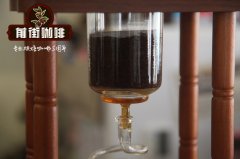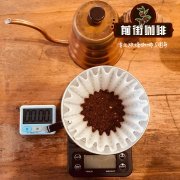Costa Rican Tara beads bitter? how can Costa Rican Tara beads taste good?

Professional coffee knowledge exchange more coffee bean information please follow the coffee workshop (Wechat official account cafe_style)
This Costa Rican coffee bean comes from the los santos producing area of Tarazu, Costa Rica. Its variety is Kaddura, which is harvested from November to March every year. The estate is located in the southeast of Costa Rica, 70 kilometers from the capital, affected by warm and humid air currents from the Pacific Ocean, with an annual rainfall of 2400 mm and an average temperature of 19 degrees. At the same time, coffee grows at an altitude of 1500 Murray 1900, with long days and short nights, unique climatic conditions, abundant precipitation, fertile volcanic ash soil and dense forest cover, making this bean an excellent growing environment.
In such a growing environment, it is easy to get high-quality coffee, at the same time, coffee farmers will only harvest fully ripe and good-quality coffee cherries. During harvest, a sugar meter is used to measure ripe berries, and the best time and treatment are determined according to the sugar content. Only coffee cherries with more than 20% sweetness will be harvested.
After harvest, the meticulous treatment of coffee cherries has a direct impact on the quality of coffee. Due to the high altitude and shortage of water resources, the manor owner began to build his own micro-treatment plant in 2000. Prior to this, ripe coffee cherries had to be sent to the common processing plant, so many batches of high quality were buried. After setting up the treatment plant, they can handle different batches of coffee on their own, while ensuring quality control in the process. The advantage is that his beans will not form large quantities of ordinary agricultural products, but let different batches of beans show their own unique taste. More importantly, the water consumption of the micro-processing plant is only 5% of that of the traditional washing treatment, and does not require a huge sink and exposure field. It can not only save the waste of water resources, but also reduce the labor force of post-processing staff.
Second, this Costa Rican Tara bead basically retains all the pectin layer in treatment, and then places it on an African scaffolding to dry for 14 days. During this period, the beans are turned every 2 hours to fully absorb the pectin layer of fructose, dehydrated and then ripe in a wooden container for 30 days. We call it "honey treatment". It has the cleanliness of washing treatment and retains the mellow and sweet feeling of sun treatment.
Adhere to the precise and rigorous coffee making process, for this bean, the extraction parameter of esp is 20.5g extraction 50g coffee solution to show its fruit-like acidity and sweetness, smooth texture. When the esp is imported, it will have the flavor of tropical fruits such as cranberry and pineapple, then turn to the taste of wine, and the final finish will have the taste of jujube tea. The milk coffee made in this way can also make the tasters feel the taste of cheesecake and the sweetness of hazelnut and milk chocolate.
Analysis of coffee brewing in Tarazhu, Costa Rica
Costa Rican Tarazhu hand punching reference
Use key home filter cup, 16 grams powder 32 grams of water steaming for 30 seconds, 89-90 degrees water temperature extraction, 1:15, fine grinding small Fuji 3.5 second water injection to 110ml cut off, wait for water drop and then slowly water injection, uniform speed, the water level should not be too high, again water injection to 233ml stop, extraction time 2:15 seconds-rich sour sweetness, we can fine-tune according to their own taste.
Important Notice :
前街咖啡 FrontStreet Coffee has moved to new addredd:
FrontStreet Coffee Address: 315,Donghua East Road,GuangZhou
Tel:020 38364473
- Prev

What are the characteristics of Ecuadorian coffee? taste and flavor characteristics of Ecuadorian boutique coffee beans
Professional coffee knowledge exchange more coffee bean information please follow the coffee workshop (Wechat official account cafe_style) Ecuador boutique coffee beans what are the flavor and taste characteristics of sea turtle beans? What are the characteristics of island coffee? What is the flavor of Ecuadorian coffee? The history of coffee cultivation in Ecuador, located between Colombia and Peru in South America.
- Next

Mexican Coffee Manor beans introduce the flavor and taste of Mexico's famous boutique coffee beans.
Professional coffee knowledge exchange more coffee bean information please follow the coffee workshop (Wechat official account cafe_style) Mexican coffee features and taste: Mexico is an exotic place with deserts, blue waters, mountains, huge cities and small villages. In recent years, the demand for high-quality coffee has greatly increased the interest of Mexican coffee buyers, which helps to mention
Related
- Detailed explanation of Jadeite planting Land in Panamanian Jadeite Manor introduction to the grading system of Jadeite competitive bidding, Red bid, Green bid and Rose Summer
- Story of Coffee planting in Brenka region of Costa Rica Stonehenge Manor anaerobic heavy honey treatment of flavor mouth
- What's on the barrel of Blue Mountain Coffee beans?
- Can American coffee also pull flowers? How to use hot American style to pull out a good-looking pattern?
- Can you make a cold extract with coffee beans? What is the right proportion for cold-extracted coffee formula?
- Indonesian PWN Gold Mandrine Coffee Origin Features Flavor How to Chong? Mandolin coffee is American.
- A brief introduction to the flavor characteristics of Brazilian yellow bourbon coffee beans
- What is the effect of different water quality on the flavor of cold-extracted coffee? What kind of water is best for brewing coffee?
- Why do you think of Rose Summer whenever you mention Panamanian coffee?
- Introduction to the characteristics of authentic blue mountain coffee bean producing areas? What is the CIB Coffee Authority in Jamaica?

